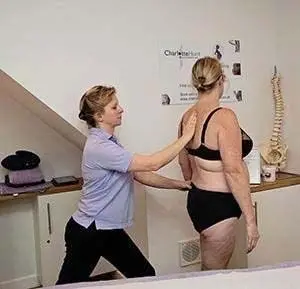
Osteopathy treatment is hands-on physical therapy. It involves helping the body’s natural healing abilities. Treatment ensures that the structure and functions of the body are working at their optimum. Improving the skeleton’s quality and range of movement and rebalancing muscles, ligaments, and tendons will affect bodily functions. These include the blood and nerve supplies to body tissues. It helps reduce pain and balance the overall health and well-being of the body.
What to Expect on Your First Osteopathy Visit?
The initial appointment takes around 1 hour and includes a case history and detailed life medical. Also, we request information about your past and current lifestyle, work-life, and diet. This gives us an overall picture of your current health.
The Osteopath will explain everything that happens clearly. You should feel very much at ease, so please feel free to ask any questions. Signing our consent and GDPR forms will allow the examination and treatment to proceed. We also hold your data.
What Does the Treatment Involve?
Osteopathy treatment involves assessment and examination of the whole body. It also means at the site of pain or area of discomfort and the surrounding and related body area. Sometimes, the cause of the problem may be in a different place than the pain. We, therefore, examine your whole body. Undressing your underwear will allow the assessment and treatment to begin. We can then visually check any imbalance in joint movement or muscle tension. A request and consent to perform simple actions will aid the Osteopath’s assessment. We will conduct a thorough examination. This involves touching or palpating the area of the body that hurts. Movement analysis remains essential. This helps us provide as accurate a diagnosis as possible for the cause of your pain.

Palpation or touch is a crucial tool. It allows us to assess the skin’s texture, joints, or painful areas for tenderness. We also look for swelling, weakness, changes in muscle tone, or joint restrictions. Treatment requires a safe diagnosis to start. We will explain the appropriate osteopathic techniques to use. Individual therapy tailoring aims at you. It will help to ensure your comfort with the treatment plan.
We will advise whether you should visit your GP for further investigations. We might require X-rays and blood tests before osteopathic treatment.
Type of Osteopathy Treatment Techniques
Usually, treatment starts with the release and relaxation of your muscles. Stretching stiff joints helps ease the pain and reduce swelling. Gentle massage and rhythmic joint exercises improve movement and reduce muscle tension.
Moreover, depending on the diagnosis, the treatment may also involve manipulation. It means the use of short and rapid movements of spinal joints. All physical techniques used will require your consent before treatment starts.
Also, Osteopathic techniques focus on the individual. The treatment will be safe and comfortable. Soreness following treatment is possible. We will also advise on how to handle this. We will give advice and exercises at the end of the appointment.
Would you please call if you have questions? Please use the Contact Us page to leave a message.
